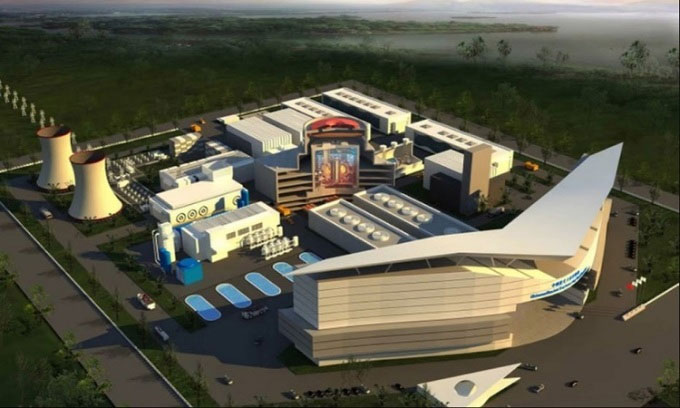China's 2 gigawatt commercial fusion reactor
A Chinese research team has designed the world's first plant that can turn fusion energy into electricity without shutting down the power grid.
When completed in 2035, the China Fusion Engineering Experimental Reactor (CFETR) will produce an enormous amount of heat with a peak capacity of 2 gigawatts. But converting heat into electricity is very difficult because the reactor needs to be shut down for 20 minutes every two hours, said Xiang Kui, chief thermal system engineer at the Guangdong Electric Power Design Institute under the Engineering Group. quantity of China. These frequent interruptions can create electrical spikes that threaten to cause major damage to the power grid, the team said in a paper published May 18 in the journal Southern Energy Construction.

Design of the CFETR furnace.
China plans to start commercial fusion power production around 2050, but the fusion power plant needs a bespoke design with a large buffer zone to protect its existing energy infrastructure against surges. The CFETR is a tokamak device built to harness fusion energy, which can generate powerful magnetic fields to control hydrogen gas 10 times hotter than the core of the Sun.
When the fusion reaction begins, two hydrogen atoms will merge into one and release enormous energy. However, hot plasma is difficult to control. The longest run ever for a reactor of this type did not exceed 2 minutes. Based on the rapid development of fusion technology in recent years, Chinese scientists estimate that within a decade, they can increase the time to maintain a stable plasma to several hours. But if the plasma becomes less stable, the reactor will need to shut down and cool down before restarting.
Xiang et al's solution is to use a heat bath. According to their design, the helium would conduct heat from the reactor to a tank filled with molten salt. As the total energy in the tank accumulates gradually, the temperature of the salt will rise to 600 degrees Celsius. The molten salt will then be pumped into a heat exchanger to boil the water and operate a turbine to help generate electricity. The process is more complicated than most power plants today, and some of the energy is lost in the heat exchanger. But this solution could effectively eliminate electrical impulses and help connect the fusion reactor to existing electrical infrastructure.
An ideal fusion reactor needs to operate continuously for months or years. Through connecting CFETR to the electricity grid, China will become the first country to use "Artificial Sun" to produce useful energy.
China introduced CFETR in 2017 as a follow-up to the International Thermonuclear Test Reactor (ITER), the world's first fusion reactor under construction in France. Launched in 2015, ITER will run for 10 minutes to demonstrate that fusion can produce more energy than it consumes. The CFETR will go further by commercializing the heat generated by the fusion furnace.
- Successfully built Stellarator-type thermonuclear reactor
- Ambition to harness energy from fusion reactions
- Pouring 1 billion yuan, China 'fired a laser' at the fusion empire of nearly 50 billion dollars
- Grid fusion synthesis power in 2050
- Why are China and many countries racing to make artificial sun?
- The supersonic aircraft is equipped with a fusion reactor
- Fusion reactor hits 100 million degrees Celsius
- The mystery behind the arc reactor in the Iron Man armor
- Superheated helium balloons,
- This $ 14 billion machine will become the future Sun of humankind
- Early nuclear fusion reactor
- The fusion reactor is 7 times hotter than the core of the Sun.
 Norway built the world's tallest wooden tower
Norway built the world's tallest wooden tower Kremlin
Kremlin Ashurbanipal: The oldest royal library in the world
Ashurbanipal: The oldest royal library in the world Decoding the thousand-year construction of Qin Shihuang shocked the world
Decoding the thousand-year construction of Qin Shihuang shocked the world